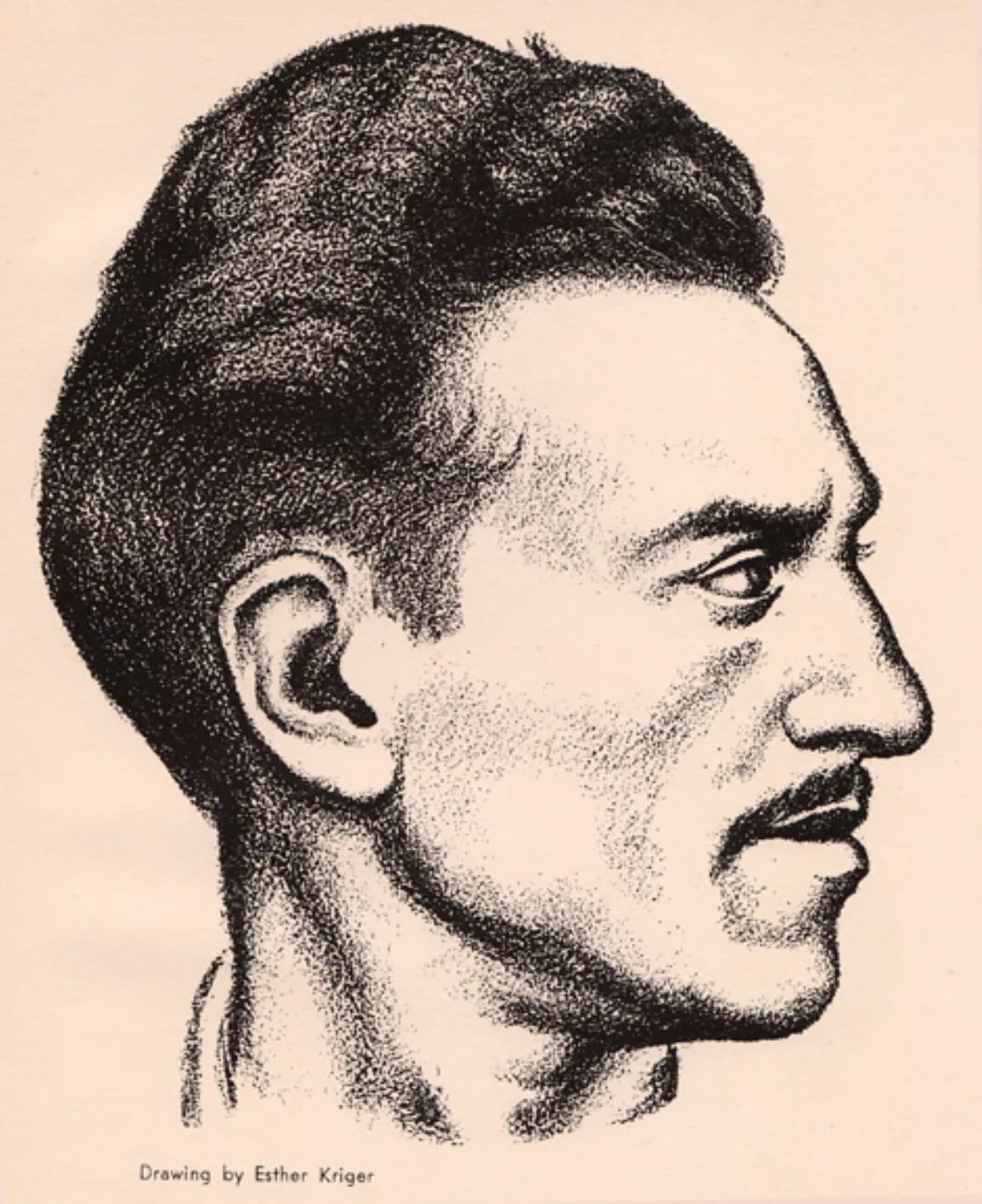 1.
1. Jacob Burck was a Polish-born Jewish-American painter, sculptor, and award-winning editorial cartoonist.

 1.
1. Jacob Burck was a Polish-born Jewish-American painter, sculptor, and award-winning editorial cartoonist.
Active in the Communist movement from 1926 as a political cartoonist and muralist, Burck quit the Communist Party after a visit to the Soviet Union in 1936, deeply offended by political demands there to manipulate his work.
Jacob Burck was awarded the 1941 Pulitzer Prize for Editorial Cartooning.
Jacob Burck was born Yankel Boczkowsky on January 10,1907, in Wysokie Mazowieckie, Poland, the son of ethnic Jewish parents, Abraham Burke, a bricklayer, and Rebecca Lew Burke.
Jacob Burck emigrated to the United States at age six and lived in Cleveland until 1924.
Jacob Burck attended the Cleveland School of Art on a scholarship after he was discovered on a Cleveland sidewalk sketching instead of attending elementary school.
When he was seventeen years old, Jacob Burck travelled to New York City to study at the Art Students League of New York under Albert Sterner and Boardman Robinson.
Jacob Burck first worked professionally as an artist as a portrait painter, an occupation which he pursued full-time for one year.
Jacob Burck joined the revolutionary movement in 1926, while still a teenager.
In 1927 or 1928, Jacob Burck began to draw occasional editorial cartoons for the Communist Party's daily newspaper, The Daily Worker, as well as its monthly artistic-literary magazine, The New Masses.
Jacob Burck went on staff at The Daily Worker full-time as cartoonist in 1929.
Jacob Burck's material was gathered for a full-length book in 1935, a 248-page work entitled Hunger and Revolt.
Jacob Burck was close friends with Alexander Calder, Whittaker Chambers, Langston Hughes, Meyer Schapiro, and many other figures in the New York art and progressive scene.
In 1931, Jacob Burck was a founding Director of the "New York Suitcase Theater", along with playwright Paul Peters, poet Langston Hughes, and writer Whittaker Chambers.
Jacob Burck's work was exhibited in the Whitney Museum of American Art's First Biennial Exhibition of Contemporary American Sculpture, Watercolors and Prints, which opened in December, 1933.
Jacob Burck contributed work to the official organ of the party's social and fraternal organization, the International Workers Order.
Jacob Burck was an accomplished muralist and exhibited groups of murals along with Edward Laning in the gallery of the Art Students League.
Jacob Burck was commissioned by the Soviet travel agency, Intourist, to create a five-panel mural for its New York offices, depicting the construction of large-scale industry in the Soviet Union.
Jacob Burck won the Pulitzer Prize for Editorial Cartooning while at the Chicago Daily Times in 1941 for a cartoon titled, If I Should Die Before I Wake.
Jacob Burck's continued style and criticism through cartooning of politicians, hypocrisy, and social injustice left him an open target during the Second Red Scare of the 1950s.
The Government claimed that Jacob Burck had joined the Communist Party in 1934 and remained a member at least through 1936.
Jacob Burck denied ever joining the Party, claiming membership had been pressed on him by his employer, the Daily Worker.
Further, witness for the government, Paul Crouch, testified in Jacob Burck's deportation hearing that he had often seen him at Communist Party meetings, yet Crouch failed to correctly identify Jacob Burck at that hearing and was revealed to be a serial perjurer.
Jacob Burck's syndications dropped drastically because of the government case, but he continued to produce daily editorial cartoons for the Chicago Sun-Times, successor to the Chicago Daily Times, over a 44-year career.
Jacob Burck's final published editorial cartoon appeared in the Chicago Sun-Times on February 23,1982.
In 1930, Jacob Burck married Esther Kriger, a fellow artist; they had two children.
Jacob Burck died on May 11,1982, at the age of 75, of injuries sustained in a fire in his home caused by a smoldering cigarette.
Jacob Burck was preceded in death by his wife and survived by children Joseph M Burck and Conrad Burck, an art dealer who showed, among others, Egon Weiner, William Christoffersen and Francisco Farreras.
Jacob Burck was a prominent painter and sculptor through the 1960s and 1970s.
Jacob Burck's work is in the permanent collections of the Museum of Modern Art, The Smithsonian Institution, The National Gallery of Art, The Art Institute of Chicago, the Whitney Museum of American Art, the Philadelphia Museum of Art, the Museum of Fine Arts, Boston, the Cleveland Museum of Art, the Baltimore Museum of Art, and the University of Michigan Museum of Art.